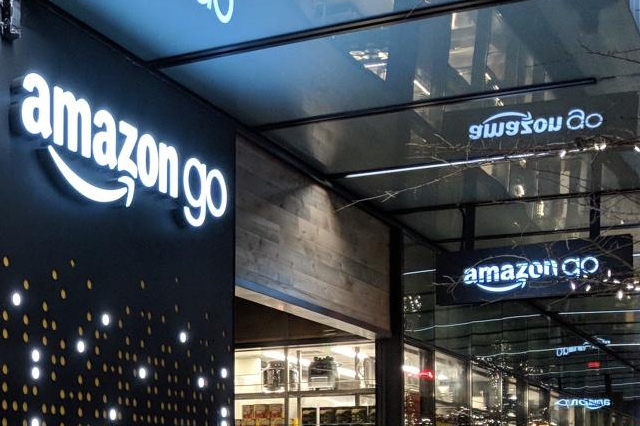
Web Developers
A report from Bloomberg has speculated that Amazon plans to open as many as 3,000 brick and mortar AmazonGo stores across the US by 2021, potentially disrupting both the convenience store and quick service restaurant market.
The Reported AmazonGo Plan
Amazon may be planning to open as many as 3,000 new AmazonGo convenience stores across the US by 2021, according to an unconfirmed Bloomberg report. As of mid-November 2018, Amazon operates six AmazonGo stores: one in San Francisco, two in Chicago and three in its hometown of Seattle. The stores typically occupy no more than 1,800 square feet. The stores sell on-the-go food options in high foot-traffic urban locations, are cashierless, and staffed only by customer service representatives, personnel to replenish stock and, in some locations, cooks to prepare food. Customers use a smartphone app to shop in an AmazonGo and leave without scanning any items. A comprehensive network of in-store cameras and sensors detects the items chosen and automatically charges the customer when they exit the store with the items. As it opens more AmazonGo locations, Amazon has shifted its product selection away from grocery and towards on-the-go food options. According to a Wall Street Journal report on December 2, 2018, Amazon is testing its cashierless checkout technology for larger stores, meaning that the impact of AmazonGo may, in time, extend beyond convenience storesWhy It Matters
Amazon held a dominant 45.8% share of US Internet retail sales in 2017, according to Euromonitor International. Yet it remains a nascent player in brick-and-mortar retail. Moving into the convenience store market challenges convenience chains such as 7-Eleven, local mom-and-pop stores and even food-service chains from Burger King to Prêt à Manger. Coresight Research believes Amazon will focus on urban locations should it pursue a convenience store strategy. This would lessen the impact on gas station and other convenience stores, but create challenges for urban convenience stores and fast-food providers. Even large grocers and mass merchants could be impacted by Amazon’s plans: Shares of Target and Walmart both fell sharply soon after Amazon’s expansion plan was reported.Disrupting Convenience Stores
AmazonGo’s potential disruption of convenience stores could also impact mass merchandisers, grocery stores and casual restaurants by chipping away at their shares of distress grocery purchases and food to go. The rollout of AmazonGo is just one of Amazon’s recent forays into new markets. Other disruptive Amazon ventures include:- Amazon’s purchase of online pharmacy PillPack for about $1 billion in June 2018.
- Amazon’s launch of a store format called 4-star, which sells nongrocery products rated four or more stars by customers.
Disrupting Quick Service Restaurants
AmazonGo may impact the fast-food sector, due to its focus on fast, freshly prepared, on-the go food options. Quick service restaurants (QSRs), ranging from McDonald’s to Prêt à Manger, could suffer from a mass rollout-and the stakes are high. US consumers spent $290.2 billion at QSRs in 2017, a 2.9% increase from 2016. Between 2012 and 2017, US QSR spending increased at an annual rate of 3.2%, while food spending as a whole grew at a pace of just 3.0% per year. However, changing consumer preferences mean that not all fast-food segments are growing at the same pace. Coresight Research data show that younger consumers tend to value healthy, fresh, organic and artisanal food options more than their older peers do. But younger shoppers demand convenience, too. If AmazonGo can position itself as healthier alternative to traditional fast-food options, it could capture speed- and health-conscious millennial shoppers. AmazonGo could also learn from its sister grocery store chain, Whole Foods Market. Whole Foods already sells prepared foods, and many locations include a food court within the store where customers can purchase food to eat there or on the go. The knowledge of consumer habits gleaned in these stores may enable Amazon to better and more efficiently select and sell products at its new AmazonGo locations.Key Takeaways
- Amazon’s reported plan to open as many as 3,000 AmazonGo stores by 2021 could disrupt the convenience store industry and have significant effects on quick service restaurants.
- Rising open-air retail space rents and high technology startup costs may mean Amazon will pay a high price to break into brick and mortar retail.
- Coresight Research believes that should Amazon pursue a convenience store strategy, the company will focus on high-traffic urban locations that attract speed- and health- conscious millennial shoppers.